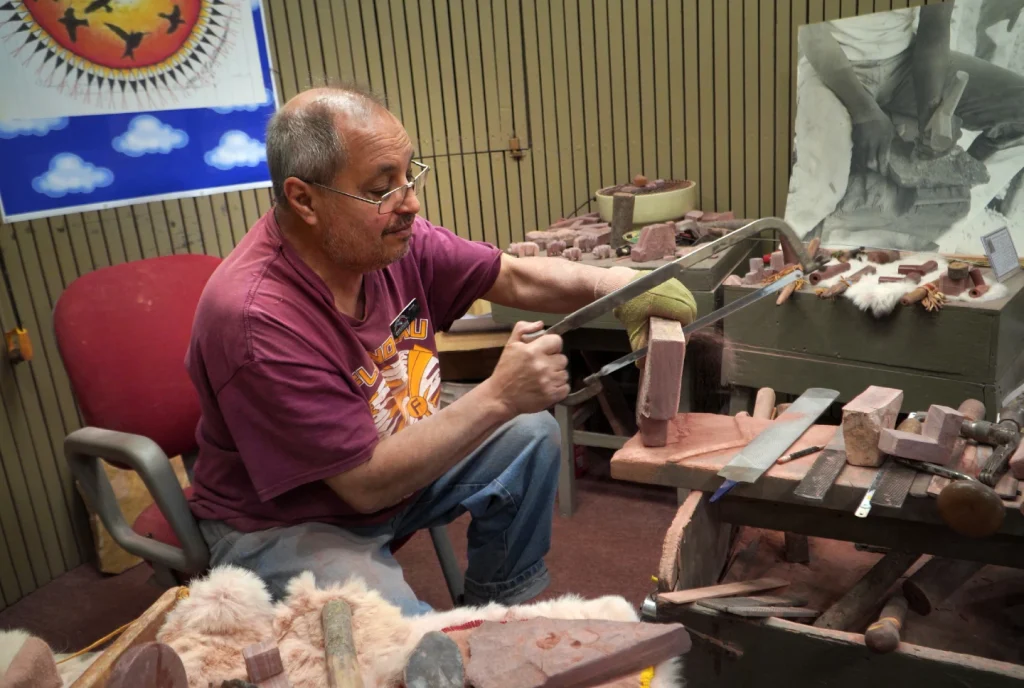The town of Pipestone, located in southwestern Minnesota, is home to a precious resource that has been utilized by Native Americans for thousands of years. The dark red pipestone found beneath the tall prairie grass has been quarried and carved into pipes that are essential to prayer and communication with the Creator.
While tensions have flared in the past over how broadly to produce and share these rare artifacts, many Dakota today are focused on passing on the skillset of carving to future generations.
Only a dozen Dakota carvers remain in the predominantly agricultural area bordering South Dakota, making it all the more important to preserve this cultural tradition.
Cindy Pederson, who learned how to carve from her grandparents six decades ago, is one of the few remaining Dakota carvers.
She is eager to pass on her knowledge to anyone who is interested and believes that the Spirit will guide those who are meant to learn this sacred craft.
The connection between carving and spiritual practice is deeply ingrained in Dakota culture, and it is essential that this tradition is preserved for generations to come.
The carvers of Pipestone are not only creating beautiful works of art, but they are also keeping alive a vital part of their heritage.
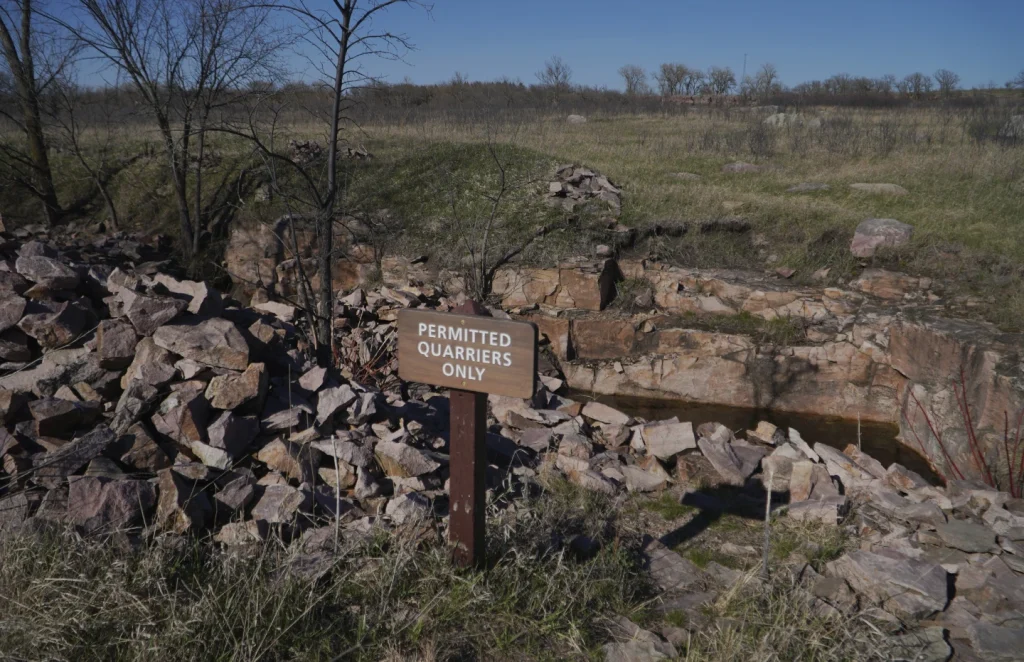
The Sisseton-Wahpeton Dakota Nation has a deep connection to the land where they were placed by the Creator.
For them, the sacred is woven into the fabric of the earth itself. This worldview is reflected in the importance they place on certain places, like the Pipestone National Monument in Minnesota.
Here, visitors can witness carving demonstrations by members of the Dakota Nation, who use a unique variety of red pipestone to create their works of art. This stone is considered sacred by the Dakota people, and for good reason.
The quarries at Pipestone have a long and storied history, dating back centuries.
According to legend, enemy tribes would lay down their arms to allow for quarrying to take place. This was because the stone was so rare and valuable that fighting over it could cause it to become unavailable to all.
Today, the quarries are still an important spiritual site for the Dakota people. They are also a reminder of the deep connection between humans and the earth, and the importance of respecting and honoring the natural world.
The natural beauty of the pink and red rocks at the monument is not the only thing that draws visitors. Colorful prayer ties and flags adorn the trees along the trails, a testament to the sacredness of the space.
For Gabrielle Drapeau, a cultural resource specialist and park ranger, this place has always been a destination for prayer.
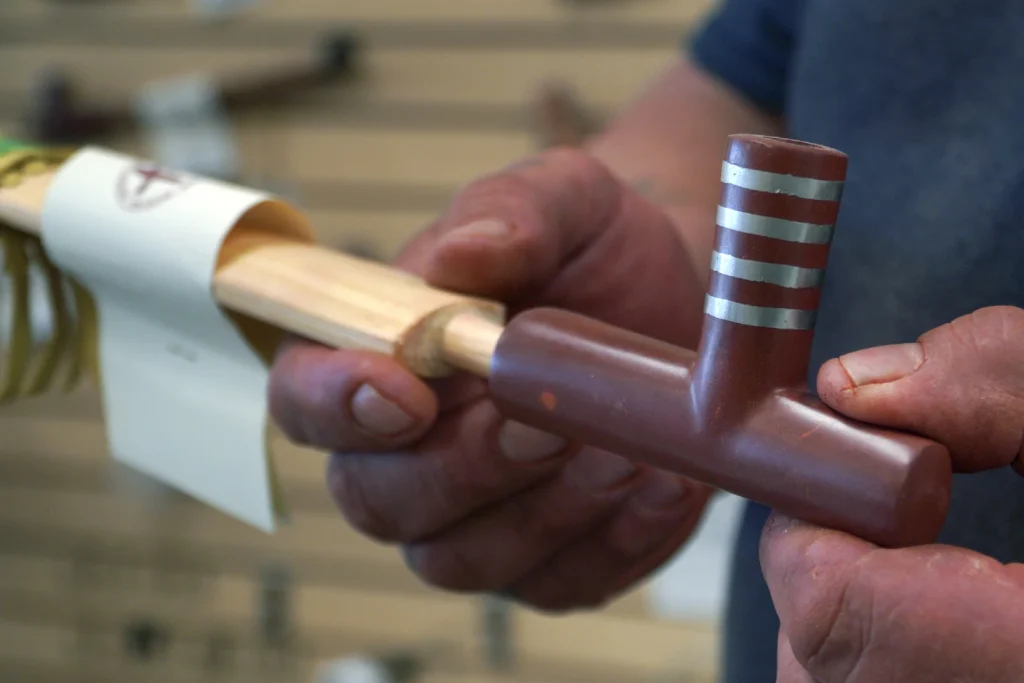
As a child, she would come here to connect with the spiritual energy of the land. Today, people from all walks of life come to this place to find peace and solace. The prayer ties and flags are a symbol of the deep connection between humans and nature, a reminder that we are all part of something larger than ourselves.
As we walk through this sacred space, we are reminded of the power of prayer and the importance of respecting the natural world.
The pipestone holds a special significance for the Yankton Sioux Tribe of South Dakota, as it is believed to be a place of peace where people can connect with the Creator.
According to one origin story, the stone turned red after a great flood that killed most people in the area, and the Creator smoked a pipe to show how people could reach him. For Indigenous people across the Great Plains and beyond, pipes are used for personal prayer, healing, and thanksgiving, as well as for marking important rites of passage.
The stone itself represents all those who came before and serves as a tangible reminder of the spiritual connection that exists between people and the Creator. It is not just any stone, but a sacred symbol of the enduring power of faith and tradition.
The spiritual significance of Pipestone is deeply ingrained in the traditions of Native American tribes. The use of pipes in prayer is a sacred practice that is taken very seriously.
The pipe becomes sacred when the pipestone bowl and wooden stem are joined, and the smoke from tobacco or prairie plants carries the prayer to the Creator.
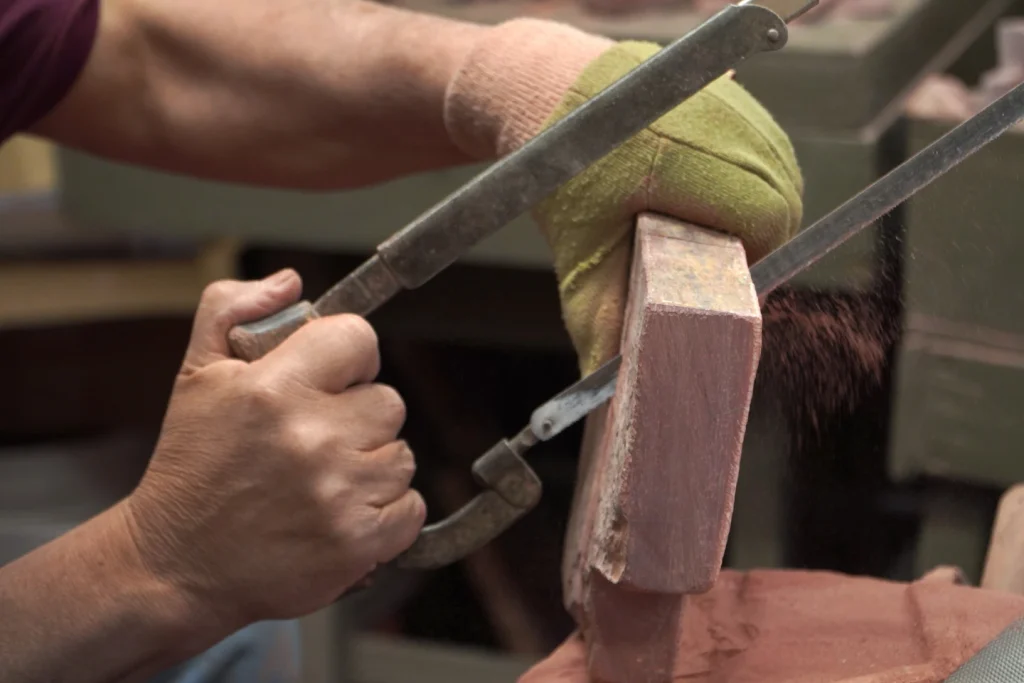
Due to the crucial spiritual connection, only people enrolled in federally recognized tribes are allowed to quarry at the monument. Some people travel from as far as Montana and Nebraska to obtain permits.
However, within tribes, there is disagreement over whether pipes should be sold, especially to non-Natives. Additionally, there is controversy over whether the pipestone should be used to make other art objects like carved animal figures.
Despite these disagreements, the spiritual significance of Pipestone remains strong. It is a place of great importance to Native American communities, and its traditions continue to be passed down from generation to generation. The use of pipes in prayer is just one example of the rich cultural heritage that is preserved at Pipestone.
As visitors explore the monument, they can gain a deeper understanding and appreciation for the spiritual and cultural significance of this special place.
Travis Erickson, a fourth-generation carver, believes that sacredness is a personal concept that is defined by an individual’s relationship with the Creator.
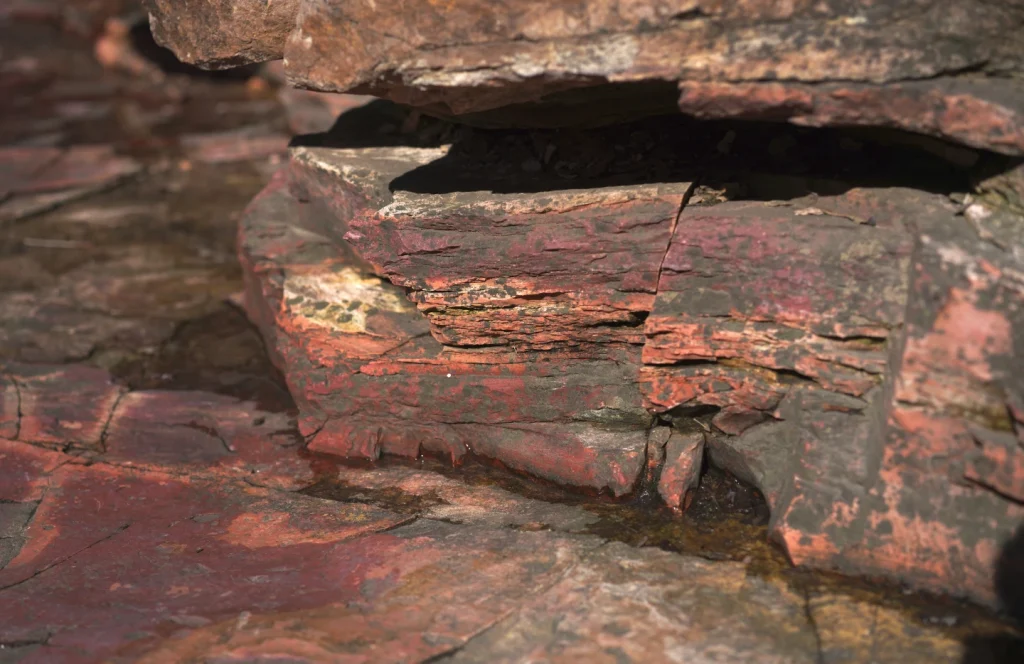
He has been working with pipestone for over two decades and holds a less restrictive view of what is considered sacred. According to Erickson, everything on Earth is spiritual.
Erickson’s first job in the quarries began when he was just ten years old. He was responsible for breaking through and removing the layers of quartzite that covered the pipestone seam.
Today, the quarry is more than 18 feet deep, and the process of removing the stone can take months. To avoid damaging the pipestone, only hand tools can be used.
Once the pipestone is removed from the quarry in sheets that are only a few inches thick, it is then carved using flint and files. Erickson believes that the stone speaks to him and guides him in his work.
He has created pipe bowls in various shapes, including horses, and believes that most of the pipes he has made have shown him what they wanted to be.
Erickson grew up in the 1960s, and making pipes was a family affair. The day often ended with a festive grilling. He taught his children the craft but laments that few younger people are interested in taking up the arduous job.
Pederson, another pipestone carver, shares Erickson’s concerns about the future of their craft. Some of her younger family members have shown an interest in learning, including her granddaughter, who used to hang out in Pederson’s workshop from the age of three.
Despite emerging from the workshop “pink from head to toe” from the stone dust, her granddaughter was fascinated by the process.
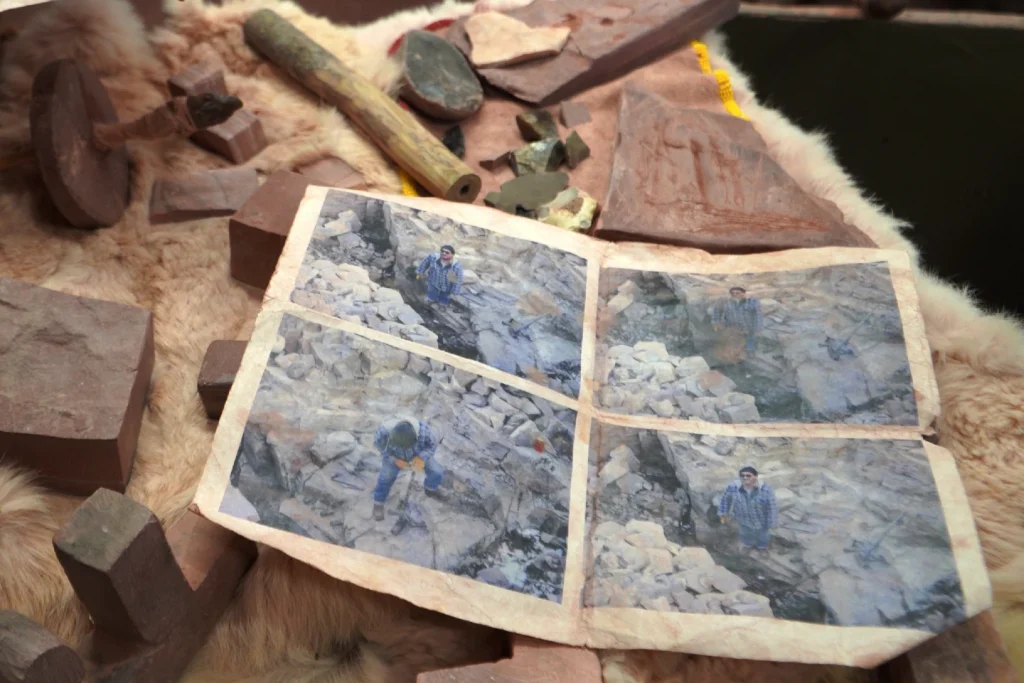
In conclusion, pipestone carving is a traditional craft that requires skill, patience, and dedication. While some carvers believe that certain aspects of the craft are sacred, others hold a more liberal view.
Nevertheless, both Erickson and Pederson are concerned about the future of their craft and hope that younger generations will take an interest in learning this ancient art form.
The Pipestone National Monument is not only a site of historical significance, but it also holds cultural and spiritual importance for Native American tribes. As the younger generation becomes more disconnected from their traditional lifeways, it is crucial to educate and engage them in the practices of quarrying and carving pipestone.
Through initiatives such as tailored school field trips and new exhibits, the National Park Service and tribal leaders are working together to foster awareness and appreciation for the significance of the monument.
It is important for Native youth to understand that they have every right to come to the monument and pray, as many spiritual practices were repressed in the past.
The tradition of quarrying and carving pipestone has been passed down through generations and will continue as long as it is shared with the younger generation.
By teaching techniques and developing a relationship with the pipestone, youth can gain a deeper understanding of their cultural heritage. It is essential to hold onto the teachings, prayers, and songs that make pipes be, as they are an integral part of Native American traditions.
As demonstrated by Mark Pederson’s demonstrations at the visitor center, young visitors are eager to learn and participate in the practices of quarrying and carving.
By continuing to educate and engage youth, we can ensure that the tradition of pipestone quarrying and carving remains alive for generations to come.
The Pipestone National Monument is a sacred site that has been used for quarrying by various tribal nations for over 3,000 years.
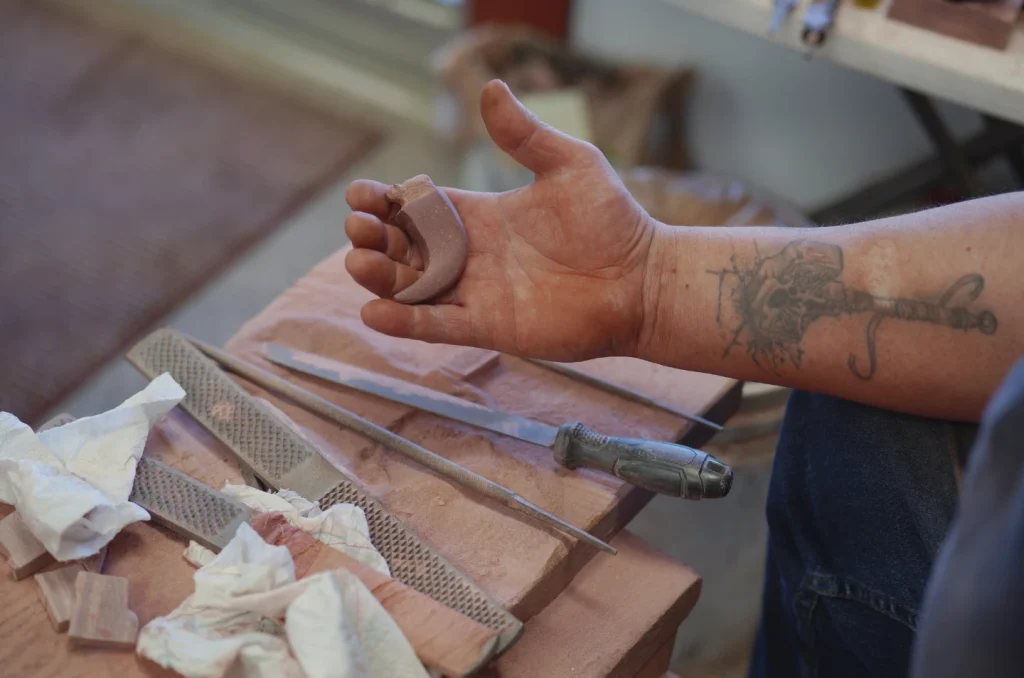
As a result, the National Park Service has worked extensively with tribal leaders to ensure that the site is respected and protected. Some areas of the park are open only for ceremonial use, and visitors are asked not to interfere with the quarriers.
One recent change that was brought about through consultations with tribal leaders was the park’s decision to no longer sell pipes at the visitor center.
While other pipestone objects, like small carved turtles or owls, are still available, pipes can now only be purchased at stores a few miles away in Pipestone’s downtown. This decision was made in response to tensions over the use of sacred pipes by non-Natives, which has been a concern for centuries.
According to Greg Gagnon, a scholar of Indian Studies and author of a textbook on Dakota culture, the issue of non-Natives using sacred pipes predates the United States.
French and English explorers traded them, which was seen as a form of appropriation by many tribal nations. Gagnon believes that nobody wants to have their world appropriated, and that there is a legitimate fear that opening up traditions to outsiders could dilute their meaning.
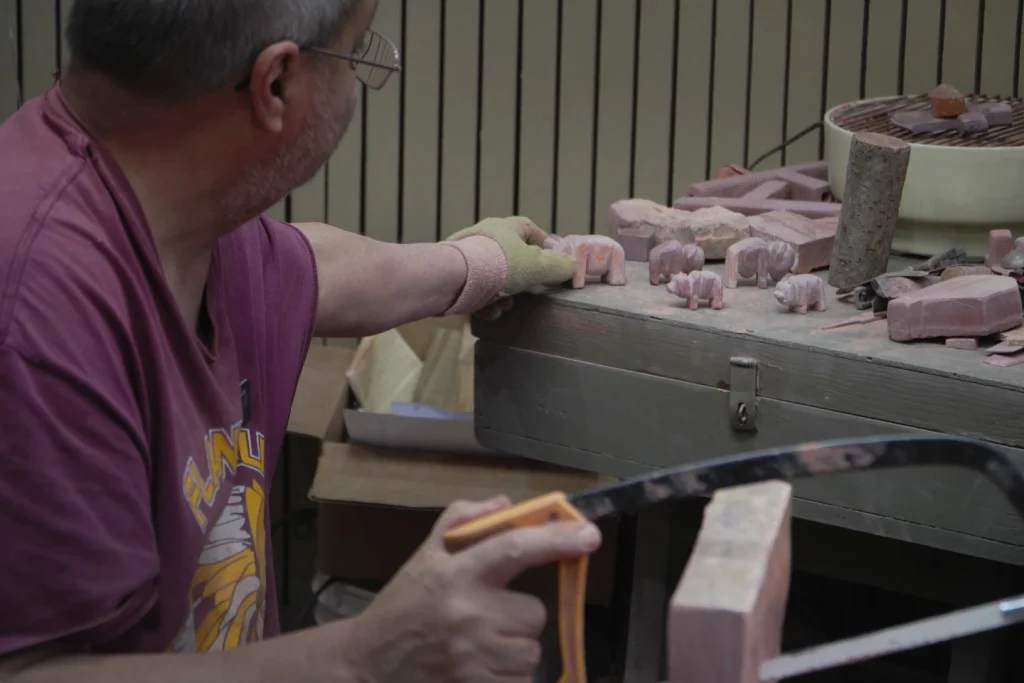
However, he also believes that it’s important not to become too entrenched in dogmatic ways of understanding traditions.
For carvers like Pederson, who works with pipestone to create pipes and other objects, the stone itself is believed to have a spiritual power that can help guide the crafting process. She believes that good intentions and the Spirit at work in both those practicing the craft as well as those receiving the pipestone are reasons to be optimistic about the future.
Overall, the Pipestone National Monument serves as a reminder of the deep spiritual and cultural connections that many tribal nations have to the land.
By working together with tribal leaders and respecting their traditions, the National Park Service hopes to ensure that this sacred site remains protected for generations to come.
